
Mackinac Island is an island and resort area, covering 4.35 square miles (11.3 km2) in land area, in the U.S. state of Michigan. The name of the island in Odawa is Michilimackinac and "Mitchimakinak" in Ojibwemowin, meaning "Great Turtle". It is located in Lake Huron, at the eastern end of the Straits of Mackinac, between the state's Upper and Lower Peninsulas. The island was long home to an Odawa settlement and previous indigenous cultures before European colonization began in the 17th century. It was a strategic center of the fur trade around the Great Lakes. Based on a former trading post, Fort Mackinac was constructed on the island by the British during the American Revolutionary War. It was the site of two battles during the War of 1812 before the northern border was settled and the US gained this island in its territory.

Mackinac County is a county in the Upper Peninsula of the U.S. state of Michigan. As of the 2020 census, the population was 10,834. The county seat is St. Ignace. Formerly known as Michilimackinac County, in 1818 it was one of the first counties of the Michigan Territory, as it had long been a center of French and British colonial fur trading, a Catholic church and Protestant mission, and associated settlement.

Sault Ste. Marie is a city in the Upper Peninsula of the U.S. state of Michigan. It is the county seat of Chippewa County and is the only city within the county. With a population of 13,337 at the 2020 census, it is the second-most populated city in the Upper Peninsula, behind Marquette. It is the primary city of the Sault Ste. Marie, MI Micropolitan Statistical Area, which encompasses all of Chippewa County and had a population of 36,785 at the 2020 census. Sault Ste. Marie was settled by mostly French colonists in 1668, making it the oldest city in Michigan.
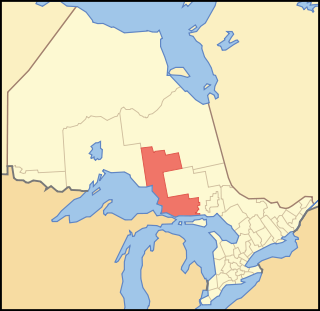
Algoma District is a district and census division in Northeastern Ontario in the Canadian province of Ontario.

Henry Rowe Schoolcraft was an American geographer, geologist, and ethnologist, noted for his early studies of Native American cultures, as well as for his 1832 expedition to the source of the Mississippi River. He is also noted for his major six-volume study of Native Americans commissioned by Congress and published in the 1850s.

Fort Mackinac is a former British and American military outpost garrisoned from the late 18th century to the late 19th century in the city of Mackinac Island, Michigan, on Mackinac Island. The British built the fort during the American Revolutionary War to control the strategic Straits of Mackinac between Lake Michigan and Lake Huron, and by extension the fur trade on the Great Lakes. The British did not relinquish the fort until thirteen years after the end of the American Revolutionary War. Fort Mackinac later became the scene of two strategic battles for control of the Great Lakes during the War of 1812. During most of the 19th century, it served as an outpost of the United States Army. Closed in 1895, the fort has been adapted as a museum on the grounds of Mackinac Island State Park.
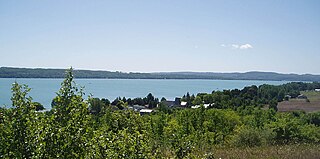
Lake Leelanau is a lake that is located in the Leelanau Peninsula of the U.S. state of Michigan. The lake is divided into two basins, usually referred to as North Lake Leelanau and South Lake Leelanau, which are divided by the Lake Leelanau Narrows in the community of Lake Leelanau. The entire lake covers about 8,608 acres (35 km2). The lake is drained by the Leland River, which flows to Lake Michigan in the community of Leland.

The Sault Ste. Marie Tribe of Chippewa Indians, commonly shortened to Sault Tribe of Chippewa Indians or the more colloquial Soo Tribe, is a federally recognized Native American tribe in what is now known as Michigan's Upper Peninsula. The tribal headquarters is located within Sault Ste. Marie, the major city in the region, which is located on the St. Marys River.
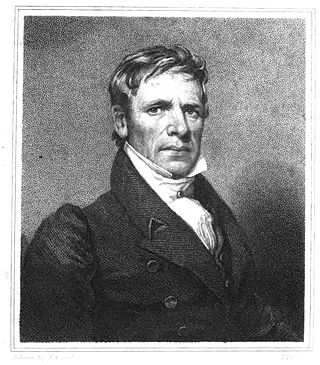
John Tanner, known also by his Ojibwe name Shaw-shaw-wa-ne-ba-se, was captured by Odawa Indians as a child after his family had homesteaded on the Ohio River in present-day Kentucky. He grew up among the Odawa and Ojibwe nations, becoming fully acculturated and learning the Saulteaux language. He married an Ojibwe woman, served as a guide for European fur traders, and worked as an interpreter. His story of life with the Ojibwe was published in 1830. Titled A Narrative of the Captivity and Adventures of John Tanner, it was a popular success and remains an important historical record.
Edison Sault Electric Company was a public utility that provided electricity to the eastern portion of Michigan's Upper Peninsula. Its service area covered four counties.

The Richard and Jane Manoogian Mackinac Art Museum is an art museum located in the historic Indian Dormitory building on Mackinac Island, Michigan. The museum's exhibits feature art inspired by Mackinac Island, including historic painting and maps, photographs from the mid-19th to the mid-20th century, Native American art and beaded garments, and contemporary art and photography from area artists.

Fort St. Joseph is a former British outpost on the southernmost point of St. Joseph Island in Ontario, Canada, on Lake Huron. The fort consisted of a blockhouse, powder magazine, bakery building, Indian council house and storehouse surrounded by a palisade.
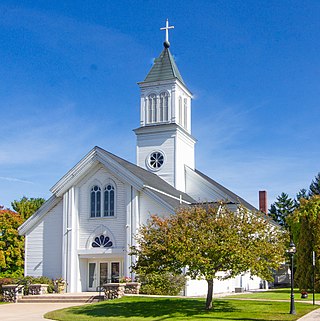
Lake Leelanau is an unincorporated community and census-designated place (CDP) in Leelanau County, Michigan, near the lake of the same name. As of the 2020 census it had a population of 229. It is situated along M-204 at the "narrows" that separate North and South Lake Leelanau. The community is divided between Leland Township and Suttons Bay Township.
The term mixed-blood in the United States and Canada has historically been described as people of multiracial backgrounds, in particular mixed European and Native American ancestry. Today, the term is often seen as pejorative.
Ozhaguscodaywayquay, also called Susan Johnston, was an Ojibwe woman and was an important figure in the Great Lakes fur trade before the War of 1812, as well as a political figure in Northern Michigan after the war. She married the British fur trader John Johnston, an inland trader of the North West Company. They had prominent roles in the crossroads society of Sault Ste. Marie, Michigan and the territory before 1830, and entertained notable visitors from a variety of disciplines. Their daughter Jane Johnston Schoolcraft has become recognized as the first Native American literary writer in the United States.
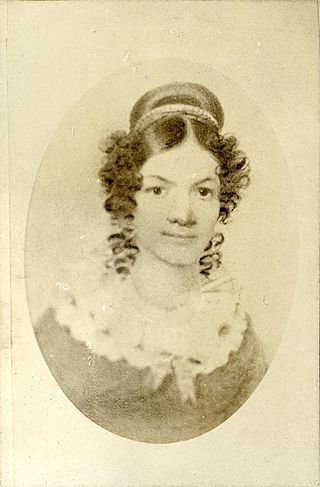
Jane Johnston Schoolcraft, also known as Bamewawagezhikaquay is one of the earliest Native American literary writers. She was of Ojibwe and Scots-Irish ancestry. Her Ojibwe name can also be written as O-bah-bahm-wawa-ge-zhe-go-qua, meaning 'Woman of the Sound [that the stars make] Rushing Through the Sky', from babaam- 'place to place, around', -wewe 'S/he(/it) makes a (repeated) sound', giizhig 'sky', and ikwe 'woman'. She lived most of her life in Sault Ste. Marie, Michigan.
John Johnston (1762–1828) was a wealthy and successful British fur trader for the North West Company. He operated a trading post at what is now Sault Ste. Marie, Michigan when it was still Canadian territory before the War of 1812. After the border became redefined, Johnston was a prominent citizen and leader in the Michigan Territory of the United States, although he never became a US citizen.

The John Johnston House is a private house located at 415 Water Street in Sault Ste. Marie, Michigan. It was listed on the National Register of Historic Places in 1970 and designated a Michigan State Historic Site in 1958.

The Literary Voyager, also known as The Muzzeniegun was a manuscript magazine produced by Henry Rowe Schoolcraft between December 1826 and April 1827, for a total of 16 issues. It is recognized as the first magazine published in Michigan, as well as the first periodical pertaining to Native American culture and mythology. The magazine contained mainly Ojibwe legends and history, as well as poems and stories written by Schoolcraft's wife, Jane Johnston Schoolcraft, an Ojibwe woman who is now recognized as the first Native American literary writer.
Henry A. Levake was an American fur trader and politician. He served in the first four sessions of the Michigan House of Representatives.



















